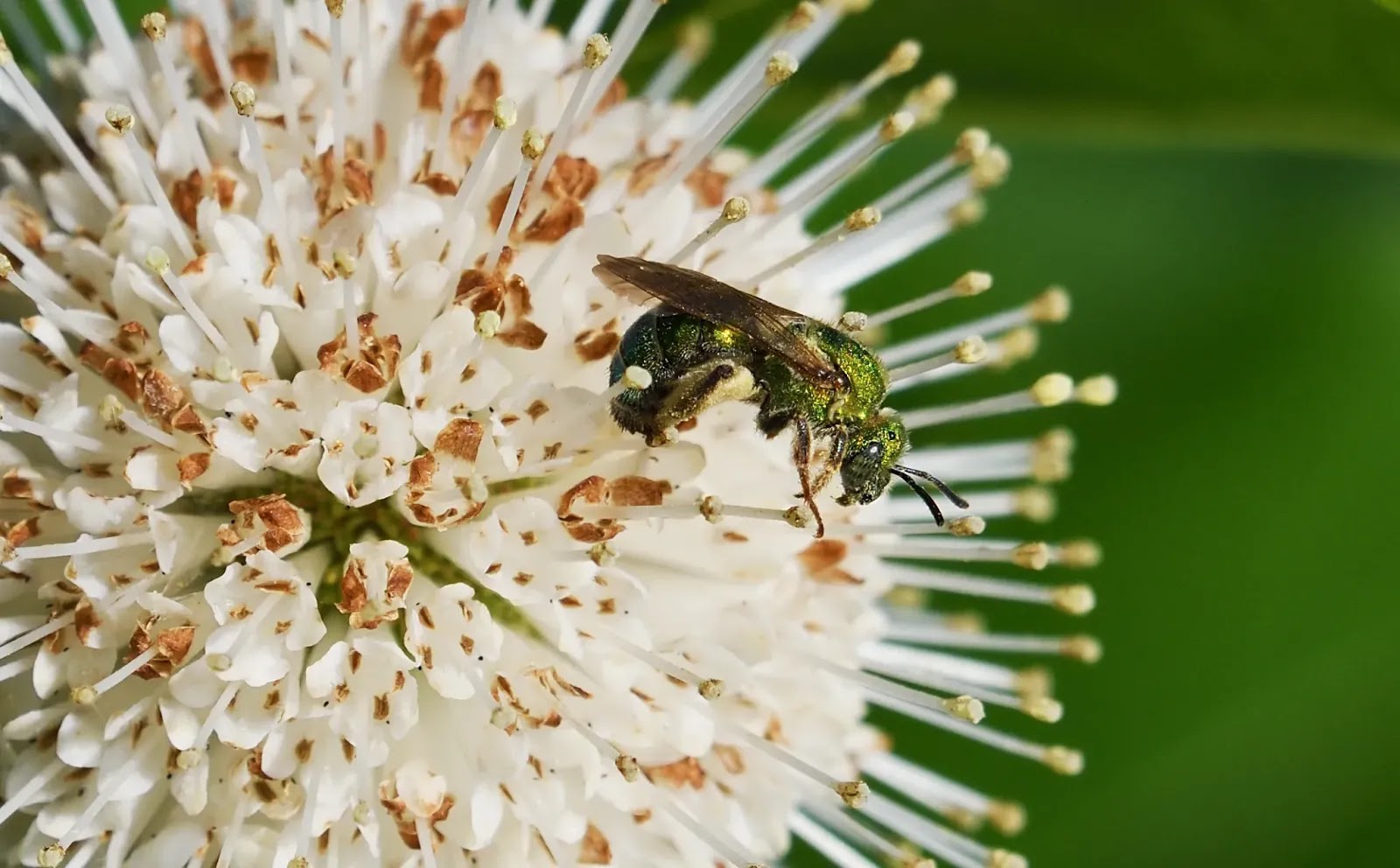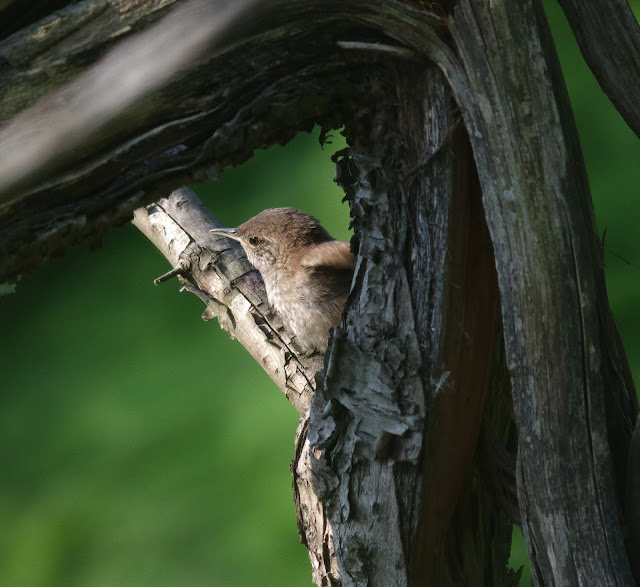Lily Pad Hopping
Commonly known as the bullhead lily, and the yellow pond-lily, Nuphar Variegata's leaves are now well distributed over the surface of Shoemaker Lake and Shoemaker Creek in carpets of floating green.
They provide shelter for underwater insects, snails, crayfish and fish. A convenient place to hide from the keen eyes of aerial predators like this Caspian tern.
On the surface, the lily pads act as a resting place for insects and occasionally frogs.
The plant is also a host for several species of beetles and their leaves and seeds are also eaten by the painted turtles in Shoemaker Lake.
And when you're as light as a red-winged blackbird, the leaves of the bullhead lily provide just enough support for walking on.
One more photo of the female red-winged blackbird as she set off on another successful lily pad hop for an unsuspecting beetle.
Just below Shoemaker Lake is the pollinator meadow and in the meadow, a female Baltimore oriole was also busy finding food for her fledglings. Her hunting ground was the line of fir trees that edge the path and the meadow.
She was finding caterpillars and chrysalis among the pine needles to bring back to her young.
One of her fledglings had found the perfect place to hide amongst the dappled shade of the bushes in the middle of the meadow.
That kind of dappled shade is much more predominant on the far side of Shoemaker Lake. The open woodland there lets through just enough light to support the young saplings and plant life on the woodland floor. My excursions through this area are not taken without precautionary measures.
Mosquitoes are prevalent here and surround anything that is moving through the undergrowth. I do not like to remove my hands from my pockets unless it is something well worth the itchy bites I will be enduring for the next few days. A great-crested flycatcher resting for a few seconds on a branch to sing, highlighted by one of the many shafts of light that managed to break through the canopy of leaves, was one such instance.
Copyright © wildlakeside.blogspot.com 2020 Scott Atkinson All Rights Reserved.
On the surface, the lily pads act as a resting place for insects and occasionally frogs.
The plant is also a host for several species of beetles and their leaves and seeds are also eaten by the painted turtles in Shoemaker Lake.
But for one female red-winged blackbird they are a convenient hunting ground on which she can easily find food for her fledgelings.
And when you're as light as a red-winged blackbird, the leaves of the bullhead lily provide just enough support for walking on.
Just below Shoemaker Lake is the pollinator meadow and in the meadow, a female Baltimore oriole was also busy finding food for her fledglings. Her hunting ground was the line of fir trees that edge the path and the meadow.
She was finding caterpillars and chrysalis among the pine needles to bring back to her young.
One of her fledglings had found the perfect place to hide amongst the dappled shade of the bushes in the middle of the meadow.
Mosquitoes are prevalent here and surround anything that is moving through the undergrowth. I do not like to remove my hands from my pockets unless it is something well worth the itchy bites I will be enduring for the next few days. A great-crested flycatcher resting for a few seconds on a branch to sing, highlighted by one of the many shafts of light that managed to break through the canopy of leaves, was one such instance.













Comments
Post a Comment